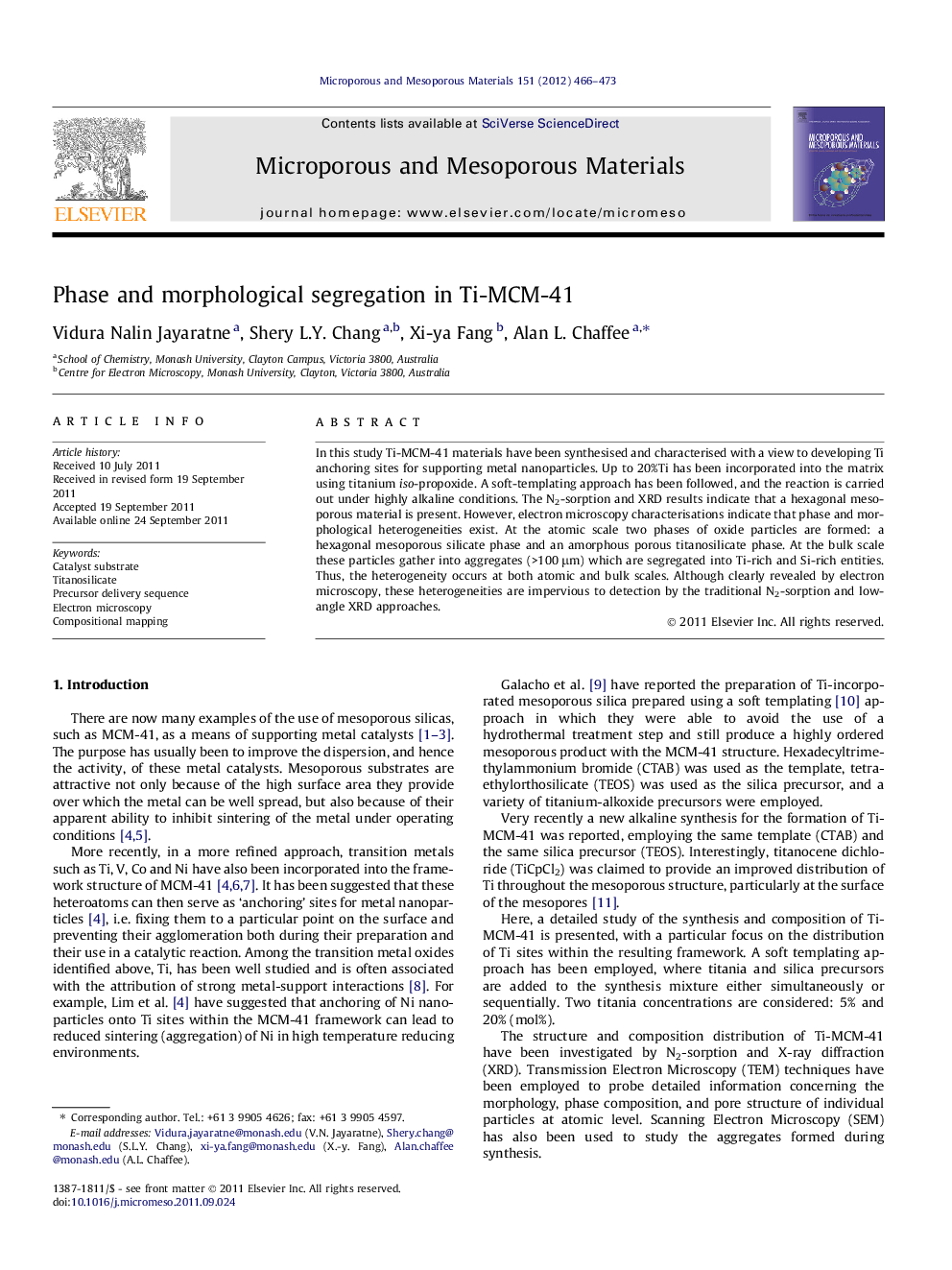| Article ID | Journal | Published Year | Pages | File Type |
|---|---|---|---|---|
| 74966 | Microporous and Mesoporous Materials | 2012 | 8 Pages |
In this study Ti-MCM-41 materials have been synthesised and characterised with a view to developing Ti anchoring sites for supporting metal nanoparticles. Up to 20%Ti has been incorporated into the matrix using titanium iso-propoxide. A soft-templating approach has been followed, and the reaction is carried out under highly alkaline conditions. The N2-sorption and XRD results indicate that a hexagonal mesoporous material is present. However, electron microscopy characterisations indicate that phase and morphological heterogeneities exist. At the atomic scale two phases of oxide particles are formed: a hexagonal mesoporous silicate phase and an amorphous porous titanosilicate phase. At the bulk scale these particles gather into aggregates (>100 μm) which are segregated into Ti-rich and Si-rich entities. Thus, the heterogeneity occurs at both atomic and bulk scales. Although clearly revealed by electron microscopy, these heterogeneities are impervious to detection by the traditional N2-sorption and low-angle XRD approaches.
Graphical abstractFigure optionsDownload full-size imageDownload as PowerPoint slideHighlights► Soft-template based alkaline synthesis of Ti-MCM-41 up to 20 mol%Ti. ► N2-sorption and XRD indicate a hexagonal mesoporous structure is present. ► Particles form in two phases: hexagonal mesoporous silica and amorphous titanosilicate. ► Particles segregate into Ti-rich and Si-rich aggregates. ► Heterogeneities cannot be detected without electron microscopy.
